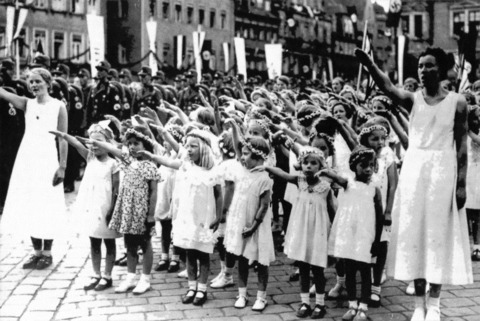Germanization was a process not exclusive to the kidnapped children of occupied territories; it was applied broadly to any individual, child and adult alike, of whom Germanic descent could be identified. The programme began in Poland, since it was the first nation to be conquered in 1939, and Poles became the largest group forcibly “re-Germanized”, both adults and children.
Racial examinations that were based on Nazi racial theory across Germany and Europe were meant to determine the racial identity of individuals and they focused on a variety of factors, including family history, language, and things as rudimentary as physical appearance. Physical appearance was a key factor in the kidnapping of children, allowing the Nazis to lay claim to populations whose actual Germanic heritage was suspect.
In a treatise from the Office of Racial Policy in the NSDAP (The National Socialist German Workers’ Party, or the Nazi Party) the following outline of the resettlement process of racially valuable Polish children is stated:
…The children suitable for this [Germanization] are not to be over 8 to 10 years of age because, as a rule, a genuine ethnic transformation, that is, a final Germanization, is possible only up to this age. The first condition for this is a complete prevention of all connections with their Polish relatives. The children receive German names which are ethnologically of accentuated Teutonic origin. Their descendant certificate will be kept by a special department. All racially valuable children whose parents died during the war or later will be taken over in German orphanages without any special regulation. (1939 Treatise by the NSDAP Office of Racial Policy in Germany, Trials of War Criminals before the Nuremberg Military Tribunals, p. 675)
Image and text source
- https://imgur.com/gallery/U1WHI
- https://history.barnard.edu/sites/default/files/inline-files/They%20Must%20Be%20Germans_Willa%20Smith_Thesis%20Spring%202020.pdf
- “They Must Be Germans”: The Nazi Germanization Program and the United Nations Relief and Rehabilitation Administration, 1939–1947, Willa Smith, Senior Thesis, Department of History, Barnard College, Columbia University, New York, NY, April 2020
